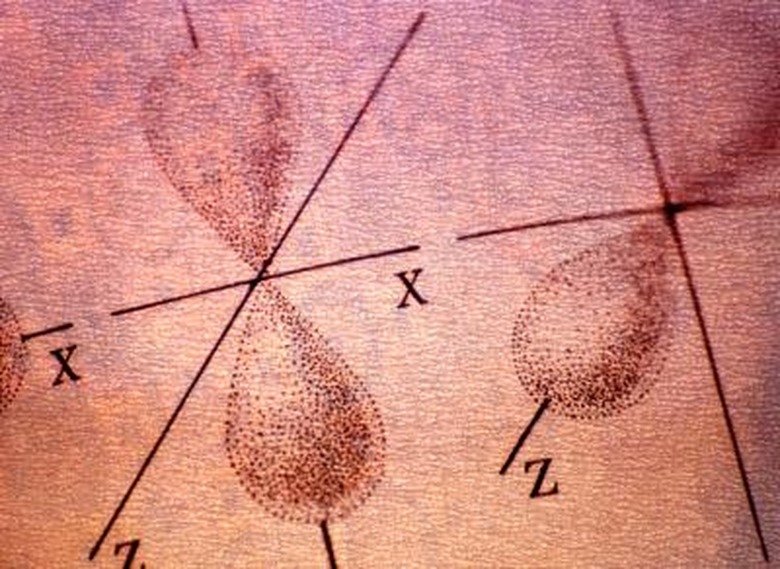2 Ways To Excite Electrons Into High Energy States
Electrons are the negatively charged particles of the atom. Electrons circle the nucleus, which contains the protons and neutrons, at various distances called shells. Each element has a certain number of electrons and shells. Under certain circumstances, an electron may move from one shell to another, or even be expelled from the element. There are two ways in which an electron can be excited enough to move to a higher shell and higher energy state.
Absorption of Photons
Absorption of Photons
An element's electron can absorb a light photon to enter a higher energy state. However, the wavelength of the photon must be a specific wavelength from each atom. Each atom when placed in spectroscope produces different combinations of colors. The elements only accept and emit light of certain wavelengths. If the wavelength has too much or too little energy for the element, it will not be accepted. Once the electron is in the excited state, for it to come down to the lower state, it emits the same color frequency photon to release energy.
Collisions
Collisions
When elements collide electrons can be taken from low states of energy to higher states. This occurs because some of the kinetic energy between the two colliding atoms is transferred into the electron. In come very fast collisions an electron may be knocked free from its parent atom. This is called collision ionization. The electron is then able to be absorbed by other atoms. Ionic bonds, which form when electrons are transferred from one element to another, occur in the fashion.
Collisions Variables
Collisions Variables
Not all collisions will result in the excitation of electrons. The kinetic energy, or the energy of motion, must be able to overcome a certain threshold to excite the electron. Temperature is a way of providing more energy and more collisions to excite atoms. At low temperatures elements move slowly and do not contain sufficient energy to excite electrons or result in chemical reactions. Higher temperatures impart more energy to the atom and increases the kinetic energy of the atom and resulting collisions.
Importance
Importance
Two important facts are determined from electrons in an excited state. One is that the chemical composition of materials can be determined by examining the light spectra given off when passed through a prism. The other is that using this light spectra chemists are able to determine electron shell levels and sublevels of the atom by examining the wavelengths of light produced by each element.
Cite This Article
MLA
Carpenter, Michael E. "2 Ways To Excite Electrons Into High Energy States" sciencing.com, https://www.sciencing.com/2-electrons-high-energy-states-8508063/. 24 April 2017.
APA
Carpenter, Michael E. (2017, April 24). 2 Ways To Excite Electrons Into High Energy States. sciencing.com. Retrieved from https://www.sciencing.com/2-electrons-high-energy-states-8508063/
Chicago
Carpenter, Michael E. 2 Ways To Excite Electrons Into High Energy States last modified March 24, 2022. https://www.sciencing.com/2-electrons-high-energy-states-8508063/
